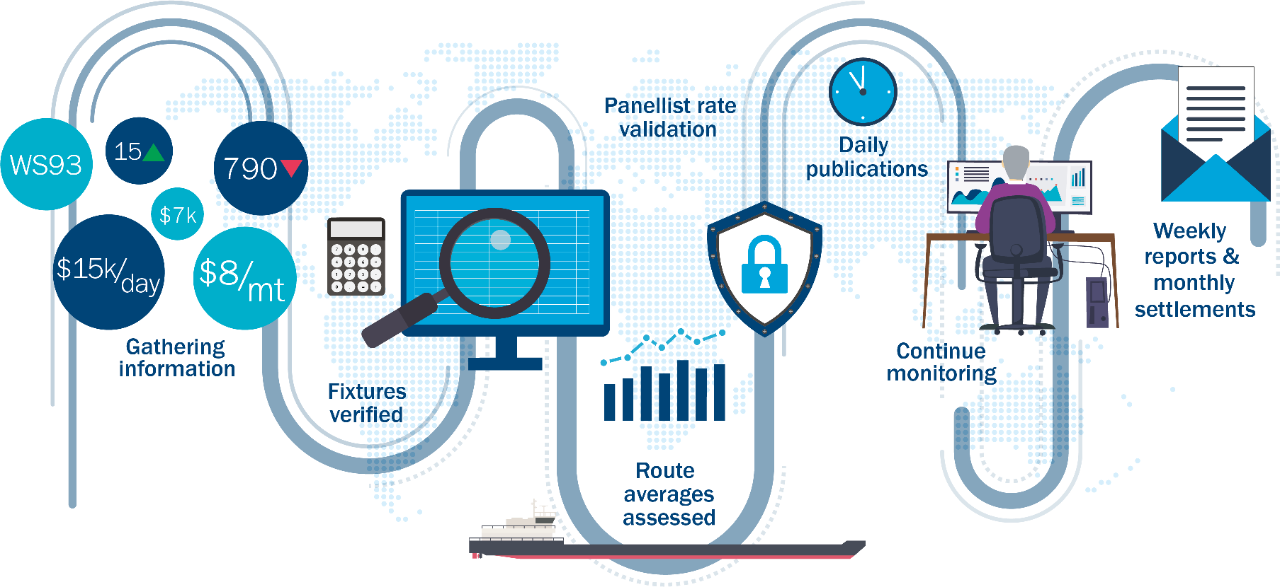The Baltic is committed in its approach to implementing and promoting adherence to internationally recognised standards of regulations to include the IOSCO Principles for Financial Benchmarks (IOSCO PFBs) and the EU Benchmark Regulation (EU BMR).
Full details of how we produce our indices and benchmarks can be found in the Guide to Market Benchmarks (GMB).

The Baltic bulk freight indices are based on an assessment of the next fixture or price point, taking into account, amongst other things, previous transactions, market conditions and supply and demand. To achieve this, we select and vet independent freight experts, shipbrokers, to submit route assessments based on the criteria set out in the GMB.
It is a characteristic of the global freight market that although a route may be routinely fixed (traded) that there may subsequently be limited or no activity for a period of time. In these circumstances panellists cannot be guided by transactions specific to the route and will use their knowledge of the wider market to provide an appropriate assessment.
The routes or price assessments reported are as representative as possible of the world’s principal bulk cargo trades and reflect tradeflows in the physical markets.
All the routes and vessel descriptions under assessment have a steady and significant turnover of fixtures, while trades subject to seasonal closures such as the Great Lakes or Goa are avoided. Trades dominated by a limited number of charterers are also avoided and voyage routes where business is largely concluded on standard terms are favoured.
Neither shipowners nor charterers are allowed to make assessments and all the brokers providing assessments are audited to ensure compliance to the GMB, which includes being fully active on the trades they are assessing.